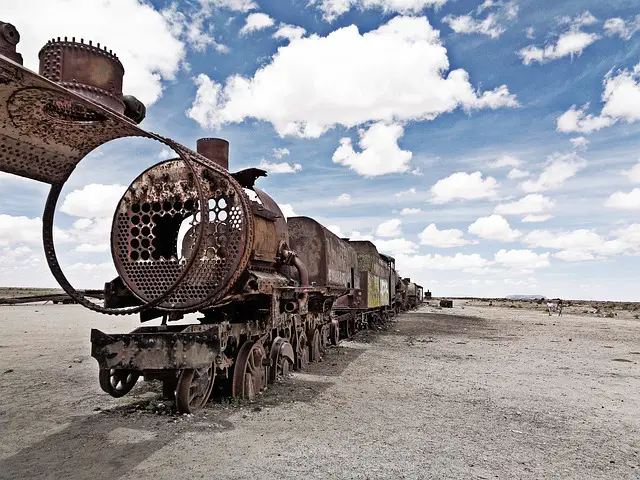💪 Support independent web, support us:
– The mesmerizing landscape of salt flats stretching over 10,000 square kilometers.
Don’t miss: – The opportunity to take perspective-bending photos on the salt flats!
Insider travel tips: – Visit during the dry season (May to October) for the best experience.
2. Tiwanaku Archaeological Site
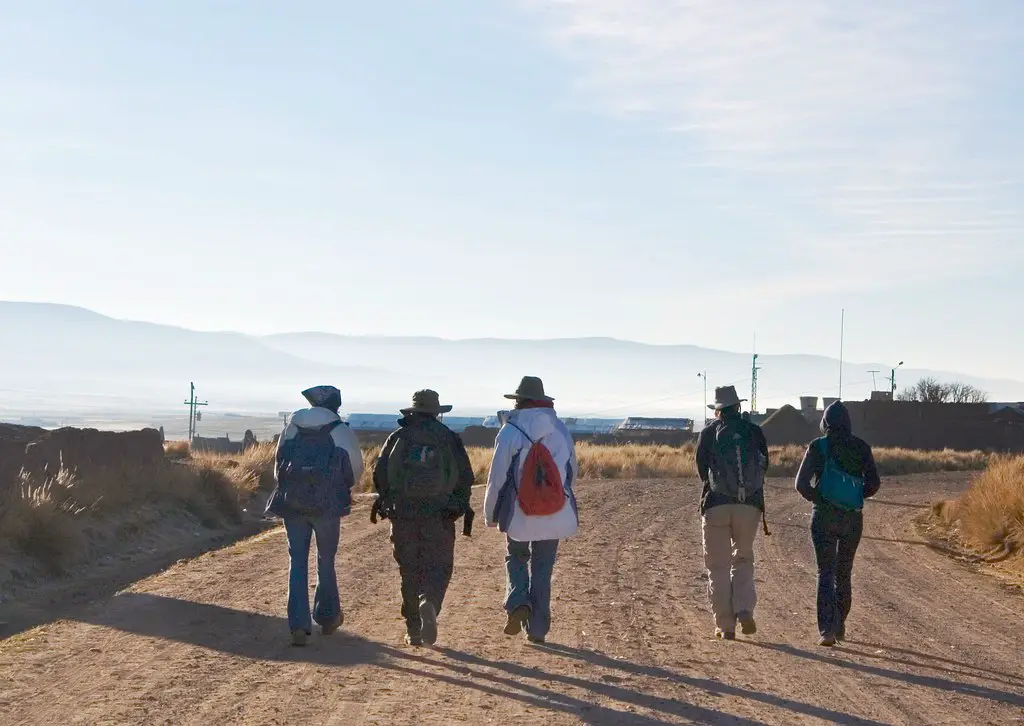
Tiwanaku is an ancient archaeological site located near the south-eastern shores of Lake Titicaca in Bolivia.
What to see or do: Visitors can explore the ruins of the ancient city that once spanned an area of over 6 square miles.
Marvel at the intricate stonework of the Gate of the Sun, a massive stone arch covered in carvings depicting religious and cultural motifs.
The complex also features a number of other impressive structures, including the Akapana Pyramid and the Pumapunku temple ruins.
Don’t miss: Don’t miss the opportunity to see the famous monoliths, such as Ponce or Fraile.
These are large stone statues carved in a distinctive style, offering further insight into the civilization that lived here over a thousand years ago.
Insider travel tips: – Consider visiting Tiwanaku during the annual festival of Alasitas, which celebrates the Aymara culture and tradition, and features colorful parades, music and dance performances, and traditional food and drink.
3. La Paz City Centre

La Paz City Centre is the heart of Bolivia’s administrative, cultural and financial activities. It is located in the Andean highlands and has a unique topography that blends with the urban landscape.
What to see or do: Stroll around the Witches’ Market and shop for potions, amulets, and other traditional medicinal products. Take a cable car ride and enjoy the picturesque view of the city.
Visit the historic San Francisco Church; the neoclassical Presidential Palace and the Metropolitan Cathedral.
Don’t miss: The Calle Jaén, a cobblestoned pedestrian street lined with restored colonial mansions that now house museums, galleries, and restaurants. The Plaza Murillo, a famous square that serves as a political hub and surrounded by grand buildings.
The food markets where visitors can sample local delicacies such as Salteñas, fried pork rinds, and api morado.
Insider travel tips: Wear layers of clothing since the weather can change abruptly. Take time to acclimatize to the high altitude to avoid altitude sickness.
Negotiate taxi fares beforehand and only use safe and licensed forms of transportation.
4. Madidi National Park
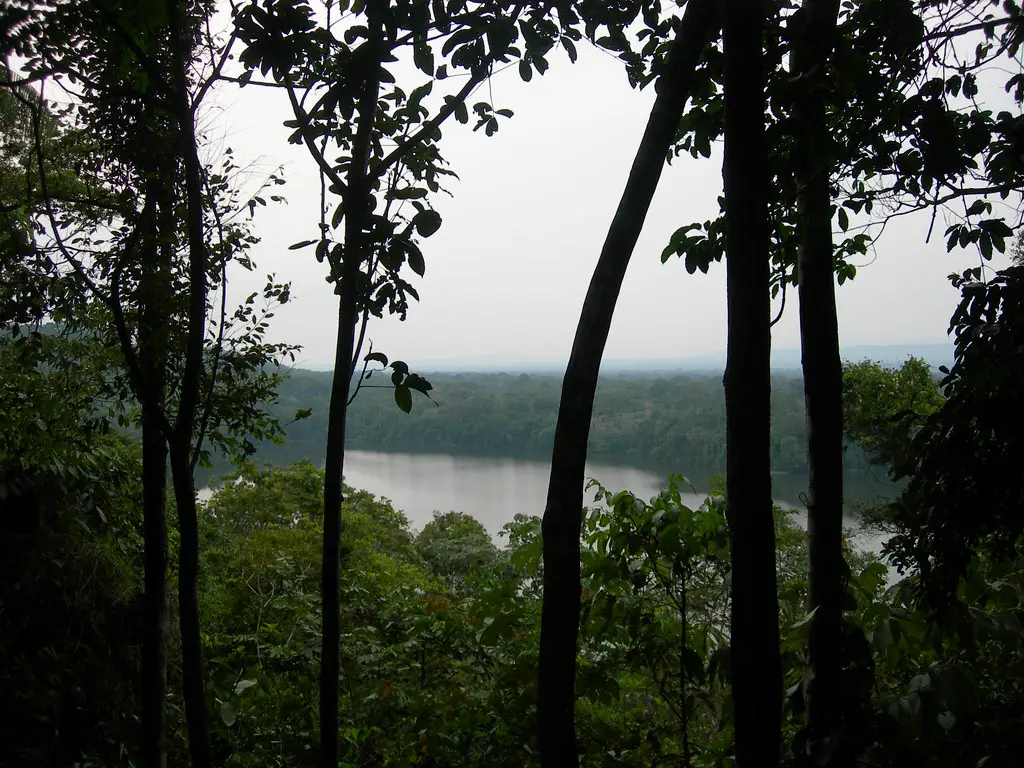
Madidi National Park is a protected area in Bolivia, covering an area of almost 20,000 square kilometers of Amazonian rainforest.
What to see or do: Explore the diverse flora and fauna of the park with a guided hike, go on a wildlife safari, visit indigenous communities to learn about their culture and traditions, or take a boat ride down the Tuichi River.
Don’t miss: A chance to spot rare and exotic animals, such as jaguars, giant otters, pumas, and macaws. The park is also home to over 1,000 bird species and different types of monkeys.
Insider travel tips: Make sure to bring plenty of mosquito repellent and sun protection, as well as comfortable hiking shoes. It’s also important to respect the park’s rules, such as not littering or disturbing the wildlife.
5. Lake Titicaca
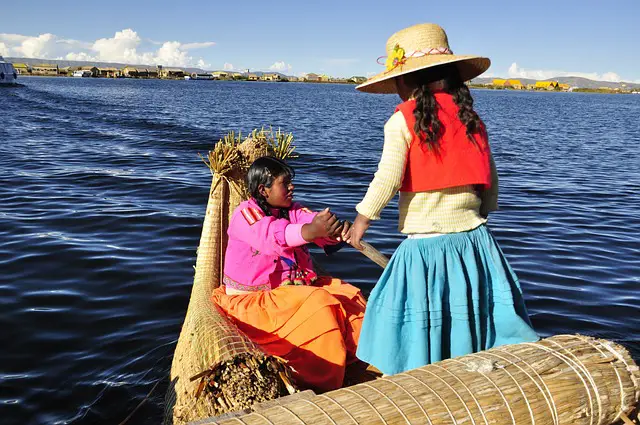
Lake Titicaca is a large, deep lake located in the Andes Mountains on the border of Bolivia and Peru, and is considered the highest navigable lake in the world.
What to see or do: – Take a boat tour of the lake to visit the floating Uros Islands, which are man-made islands constructed entirely out of reeds.
Don’t miss: – Participate in a traditional offering ceremony to the Pachamama (Mother Earth) performed by the local Aymara people, which is believed to bring good luck and prosperity.
Insider travel tips: – Bring warm clothing, as the temperatures can drop significantly at night due to the high altitude.
6. Sucre Historic Center

Sucre Historic Center is a UNESCO-listed colonial-era town located in Bolivia’s central highland.
What to see or do: Visit the Sucre Cathedral, a stunning 16th-century church.
Don’t miss: Make sure to visit the Mercado Central, a buzzing market where you can find a wide variety of Bolivian food, textiles, and handicrafts.
Insider travel tips: – Hire a local guide to learn more about the city’s history and culture.
7. Valle de la Luna (Moon Valley)
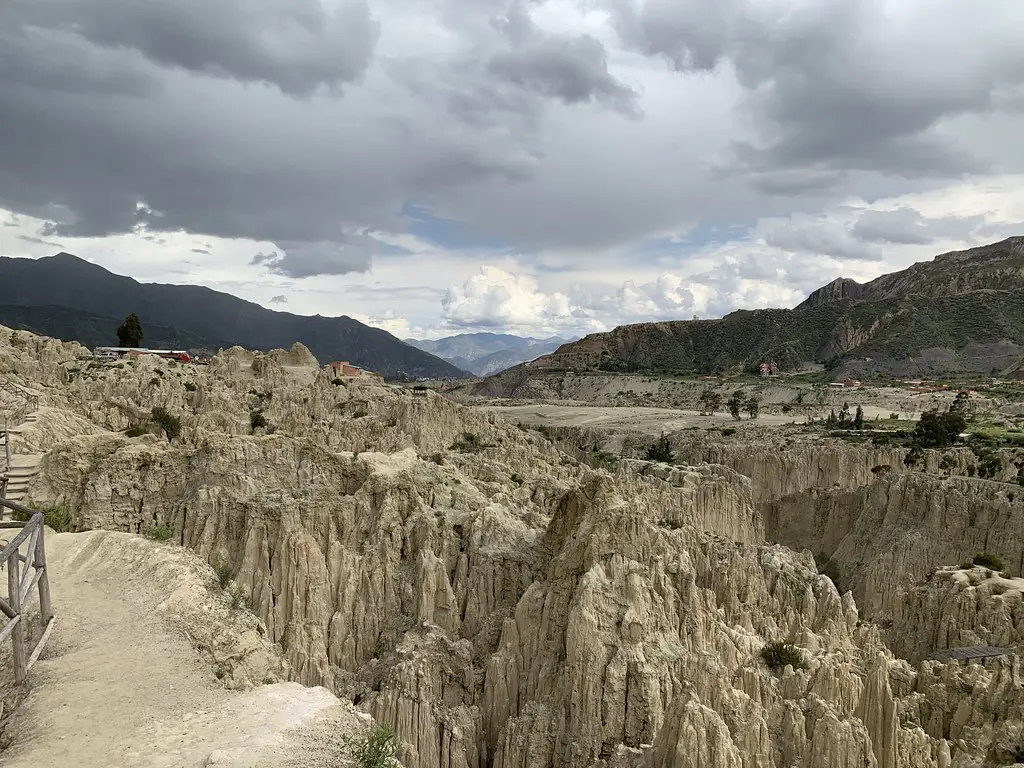
Valle de la Luna, also known as Moon Valley, is a stunning natural landscape located just outside the city of La Paz in Bolivia.
What to see or do: Visitors can explore the otherworldly terrain filled with sharp rock formations, deep canyons, and lunar-like craters. Take in panoramic views of the surrounding Andean mountains and valleys from the numerous lookout points.
Don’t miss: The stark white formations known as Las Tres Marias, the natural amphitheater, and the viewpoint of Kili Kili, which provides a stunning vista of La Paz.
Insider travel tips: Be sure to bring sun protection and water as there is little shade in the area. It is best to visit during the dry season (May-October) for optimal views and weather conditions.
Consider hiring a guide to fully appreciate the geological and cultural significance of this unique landscape.
8. Amboro National Park
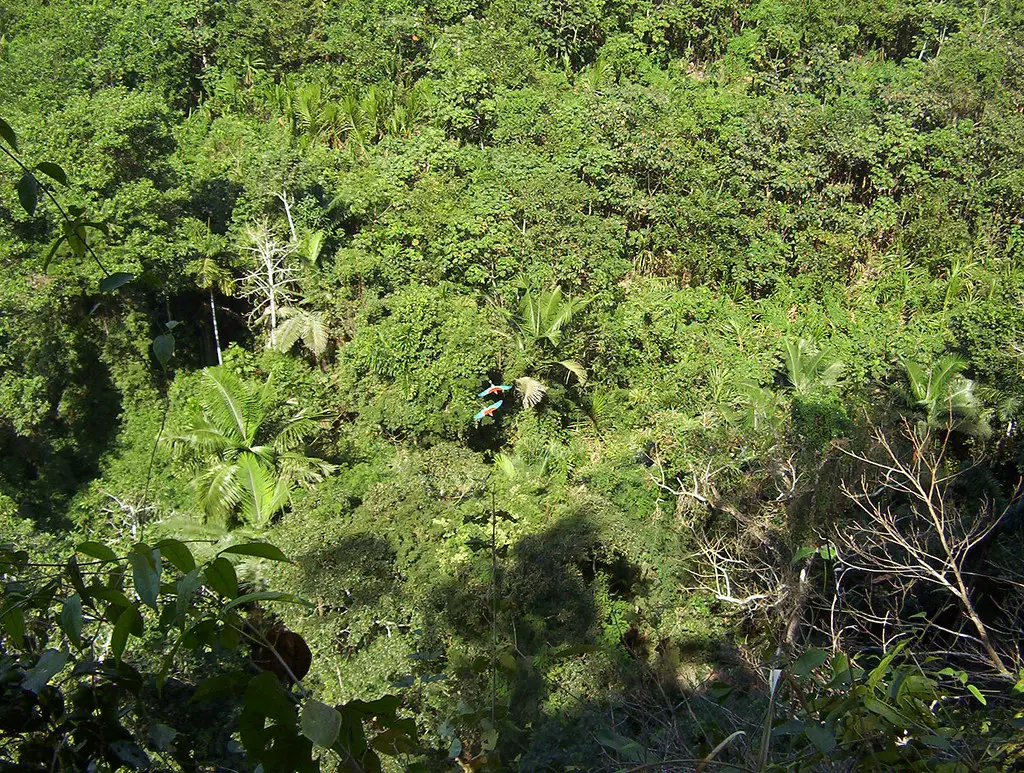
Amboro National Park is a protected area in Bolivia, located in the eastern foothills of the Andes mountain range. It covers an area of 4,425 square kilometers and is home to a diverse array of flora and fauna.
What to see or do: The park offers great opportunities for hiking and exploring the lush vegetation, waterfalls, and rivers.
Visitors can also see a variety of wildlife, including jaguars, pumas, spectacled bears, and rare birds such as the toucan and the Andean cock-of-the-rock.
Don’t miss: One of the major attractions of the park is its famous “Canyon de la Angostura,” a narrow canyon that features towering vertical walls reaching up to 150 meters high.
It’s a great spot for hiking or even rock climbing for the adventurous.
Insider travel tips: – Make sure to bring a good pair of hiking shoes as the terrain can be steep and slippery.
9. Jesuit Missions of the Chiquitos
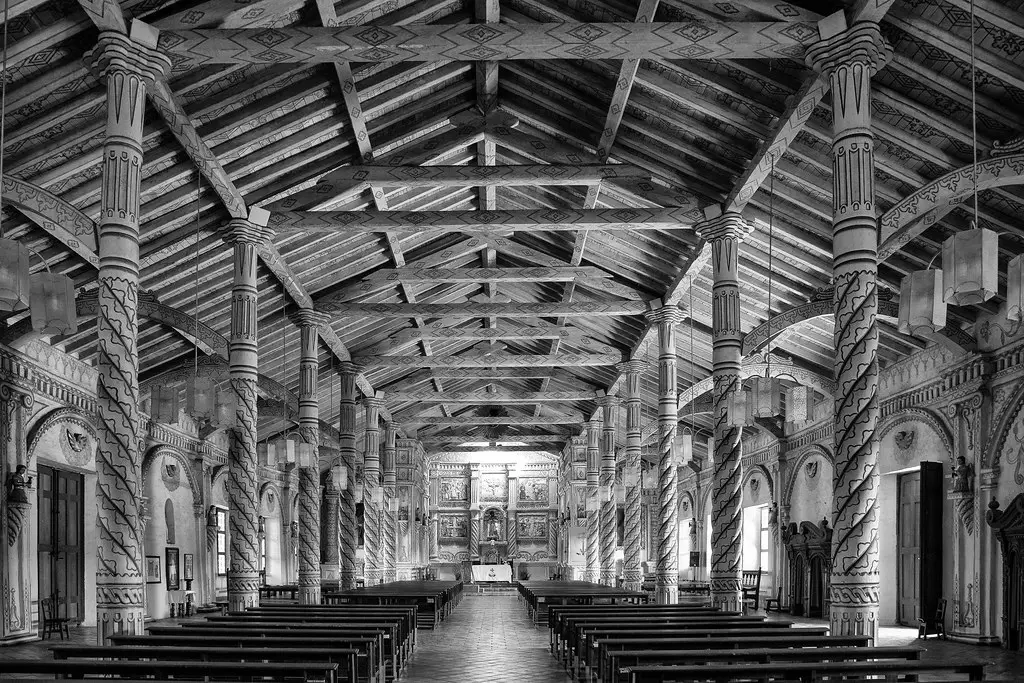
The Jesuit Missions of the Chiquitos are a group of six 17th and 18th century churches in eastern Bolivia that showcase a unique blend of indigenous and European architecture.
What to see or do: Explore the intricately decorated churches, which feature ornate carvings and paintings, as well as European Baroque and indigenous motifs. Learn about the history of the Jesuit missions and their role in preserving and promoting indigenous culture.
Don’t miss: The Church of San Xavier, which is considered a masterpiece of Chiquitano Baroque art and features colorful murals and intricate carvings.
The Holy Week festival, which brings together indigenous communities to celebrate with music, dance, and traditional ceremonies.
Insider travel tips: To fully appreciate the Jesuit Missions, it’s best to visit with a knowledgeable guide who can provide historical and cultural context.
Plan to spend several days exploring the area, as some of the churches are located in remote villages accessible only via rough roads.
Stay in one of the nearby towns, such as Santa Cruz or San Jose de Chiquitos, which offer a range of accommodations and restaurants.
10. Yungas Road (Death Road)
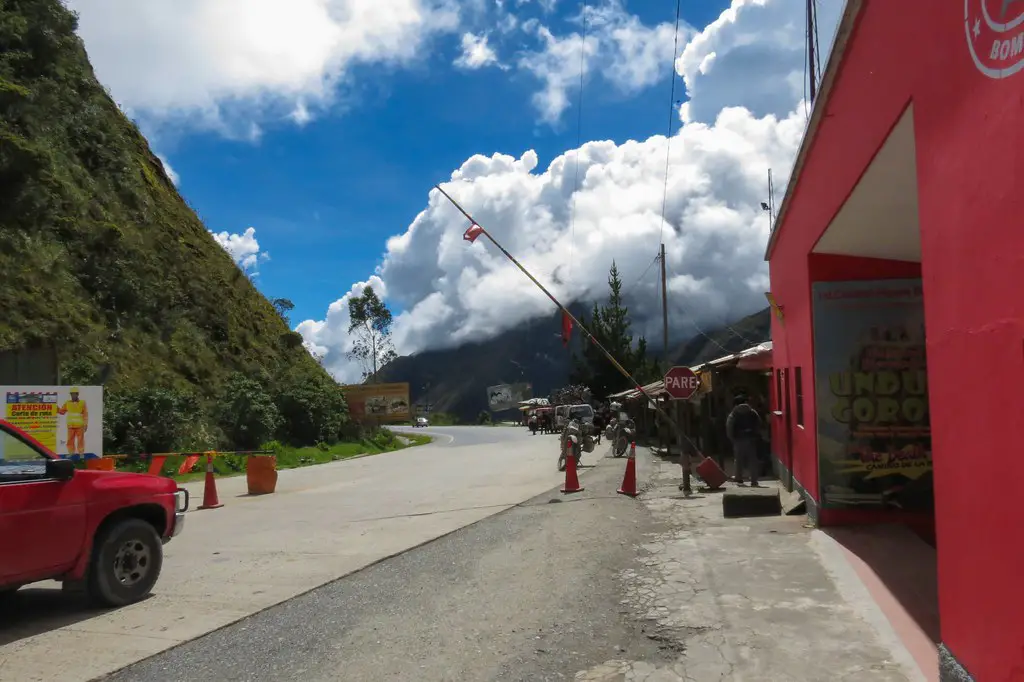
Yungas Road, also known as Death Road, is a narrow and winding mountain road that runs through the Yungas region of Bolivia.
It stretches for about 69 kilometers and has earned a reputation as one of the most dangerous roads in the world.
What to see or do: Despite its infamous reputation, Yungas Road is a popular tourist attraction for thrill-seekers who enjoy biking tours. The scenic mountain views and lush green landscapes make for a breathtaking and adrenaline-fueled journey.
Don’t miss: The most exhilarating part of the journey is the 40-kilometer descent from the La Cumbre Pass at an altitude of 4,650 meters down to the town of Coroico at an altitude of 1,200 meters.
The steep drop-off on one side and the rocky cliffs on the other make for an unforgettable experience.
Insider travel tips: It’s important to only attempt this road with a reputable tour company that provides safe and well-maintained equipment. It’s also advisable to wear protective gear such as a helmet and elbow and knee pads.
It’s best to avoid the rainy season (November to March), when the road can become slippery and even more treacherous.
11. Torotoro National Park

Torotoro National Park is a protected area located in the Potosi Department of Bolivia, known for its unique geological formations, dinosaur footprints, and stunning natural landscapes.
What to see or do: – Explore the Ciudad de Itas, a complex of natural rock formations shaped like buildings, tunnels, and plazas.
Don’t miss: – The sunset view from the Mirador del Vergel, a viewpoint overlooking the canyon and the dinosaur tracks.
Insider travel tips: – The best time to visit Torotoro is between April and October when the weather is dry and sunny, but be prepared for cold nights.
12. Laguna Colorada
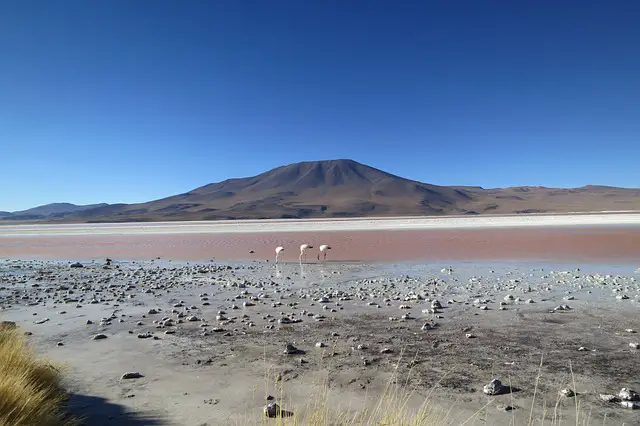
A shallow salt lake located in the Potosí Department of Bolivia, known for its vivid red, orange, and white colors.
What to see or do: Admire the stunning views of the colorful lake against the backdrop of the Andes mountains. Observe the famous flamingos and other unique wildlife that call the lake home, such as llamas and vicunas.
Don’t miss: Witnessing the dramatic color changes of the lake throughout the day, from bright red in the morning to a deep purple at sunset.
Insider travel tips: Bring warm clothing as it can get very cold, especially at night. It’s also recommended to stay hydrated and use sunscreen as the altitude can be challenging.
Consider hiring a guide to explain the geological and cultural significance of the area.
13. Rurrenabaque
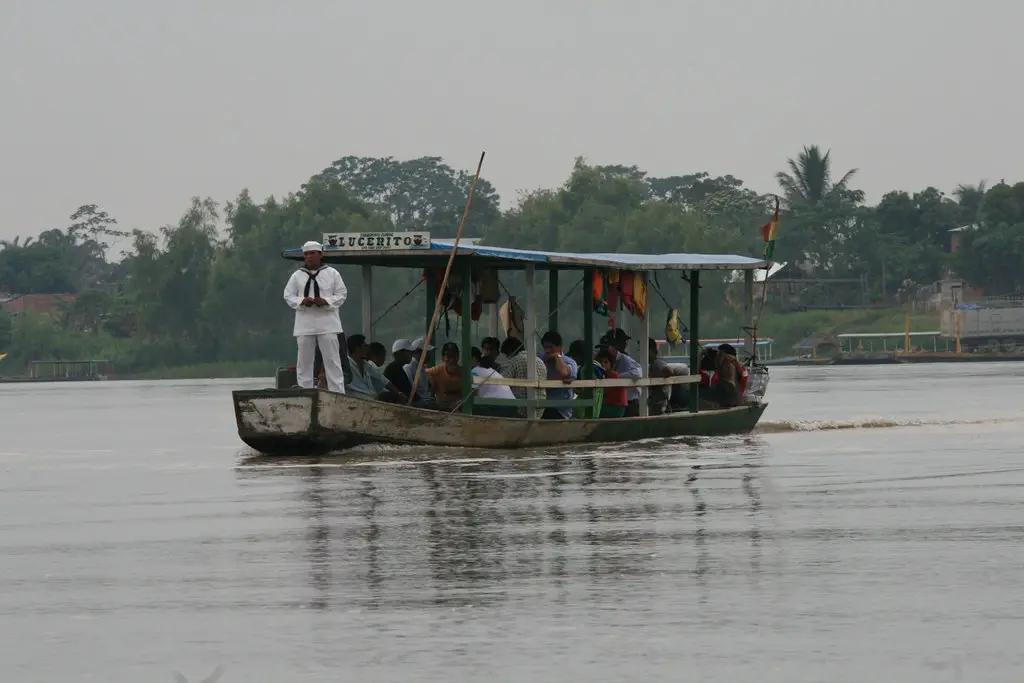
A small jungle town located in the northwest of Bolivia, serving as a gateway to the Amazon rainforest.
What to see or do: Take a jungle tour to spot wildlife like monkeys, jaguars and pink river dolphins, visit indigenous communities to learn about their culture, take a boat ride down the Tuichi river, and explore the beautiful Madidi National Park.
Don’t miss: The chance to swim with pink river dolphins in the Beni river, a unique and unforgettable experience.
Insider travel tips: Bring insect repellent and sunscreen, wear breathable clothing, and be prepared for high humidity and heat. Consider a multi-day jungle trek to fully immerse yourself in the area’s natural beauty.
Lastly, be sure to sample the local cuisine, including grilled piranha and Amazonian fruits like cocona and copoazu.
14. Plaza Murillo – La Paz
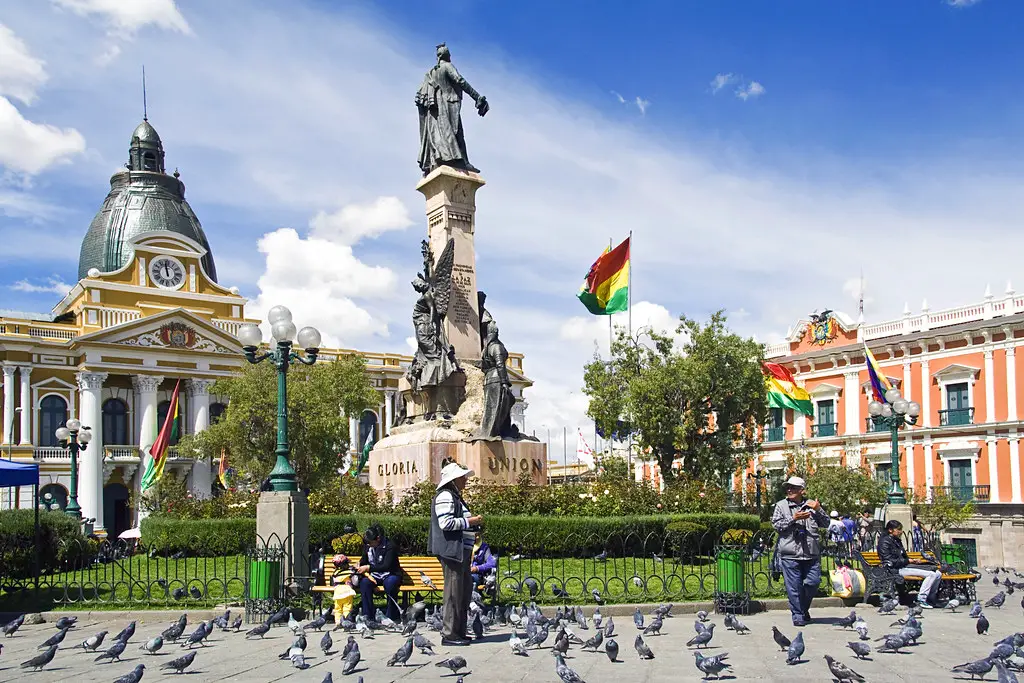
Plaza Murillo is the main square located in the heart of La Paz, Bolivia. It serves as a center for government buildings, including the Presidential Palace and the National Congress.
What to see or do: Tourists can visit the Plaza and take in the stunning architecture of the surrounding buildings, including the neo-classical-style Presidential Palace, which features a traditional changing of the guard ceremony.
The National Congress building is also impressive and open to visitors.
Don’t miss: The Plaza is also home to the Cathedral of La Paz with its beautiful façade and magnificent architecture.
It is worth taking a moment to appreciate the homonymous statue placed in the middle of the square as it holds a major symbolic value for the Bolivians.
Insider travel tips: The Plaza Murillo is located in the heart of La Paz, which means that it is a pretty busy place. Therefore, it is advisable to visit early in the morning or late in the afternoon when there are fewer crowds.
Additionally, it’s good to be aware of your surroundings and belongings as pickpocketing can be an issue in this area.
15. La Calle Jaen – La Paz
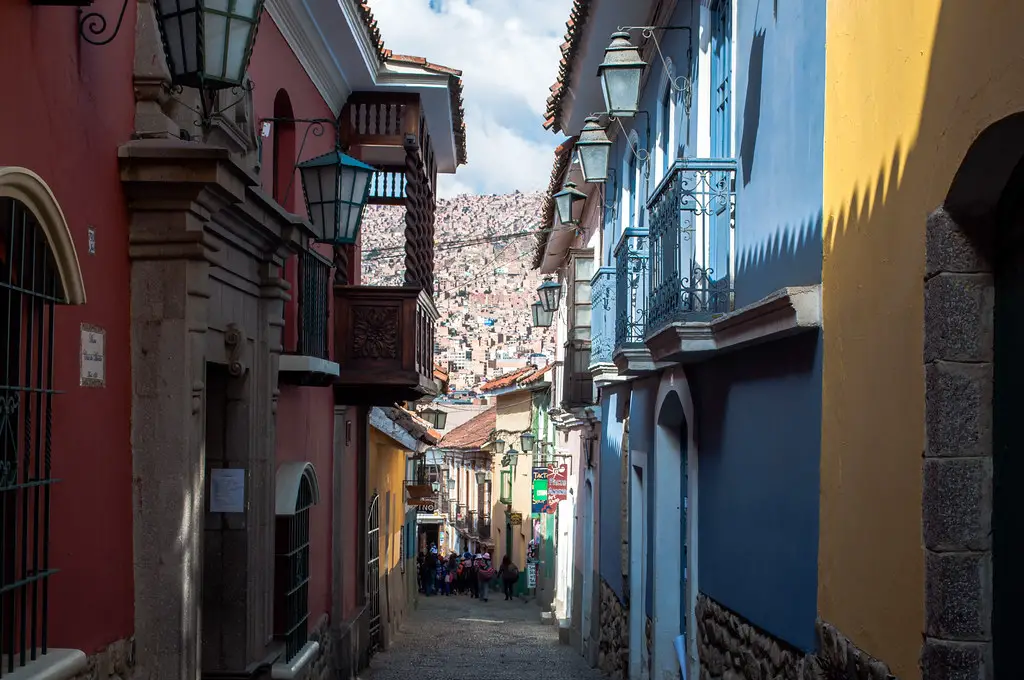
A narrow cobblestone street located in the old colonial quarter of La Paz, Bolivia.
What to see or do: Take a leisurely stroll through the colorful buildings adorned with wrought iron balconies and wooden shutters.
Visit the museums on the street showcasing the city’s history, including the Museum of Precious Metals and the Museum of Musical Instruments.
Don’t miss: The San Francisco Church and Plaza, located at the end of Calle Jaen. The church features an impressive Baroque-style facade and interior, with intricate wood carvings and gold leaf detailing.
Insider travel tips: Visit early in the morning or late afternoon to avoid the crowds, and wear comfortable shoes as the street is steep and uneven.
Watch out for pickpockets and keep a close eye on your belongings.
16. El Alto Cable Car (Teleferico)

The El Alto Cable Car, also known as the Teleferico, is a cable car network that connects the cities of La Paz and El Alto in Bolivia.
What to see or do: Take a ride on the cable car and enjoy stunning views of the surrounding mountains and the bustling cities below.
The cable car provides easy access to some of the top tourist attractions in the area, including the Witches Market and the city center of La Paz.
Don’t miss: The Red Line of the cable car network, which takes passengers to the top of the El Alto plateau and offers breathtaking views of the Andes Mountains.
The green line is another popular route that takes passengers to the Witches Market in La Paz.
Insider travel tips: Consider taking a ride on the cable car at sunset to enjoy the vibrant colors that light up the sky. Avoid taking the cable car during peak commuting hours to avoid long lines and crowded cabins.
Also, keep in mind that the high altitude can make the ride a bit challenging for those who are not accustomed to it, so be sure to stay hydrated and take it easy if you feel lightheaded or dizzy.
17. Copacabana
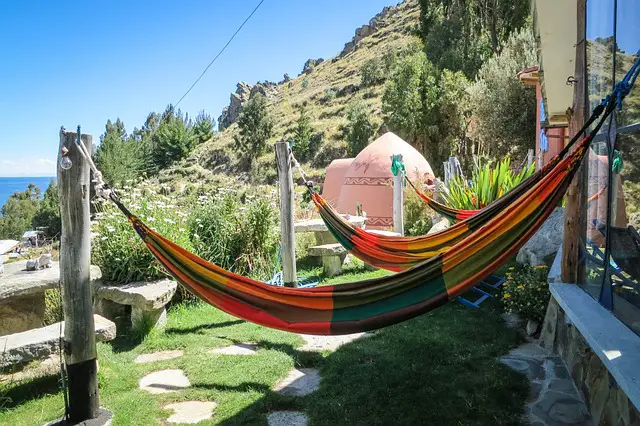
Copacabana is a small town located on the shores of Lake Titicaca, known for its religious sites and beautiful landscapes.
What to see or do: – Visit the Basilica of Our Lady of Copacabana, a Spanish colonial-style church that houses the revered Virgen de Copacabana statue.
Don’t miss: – The local food, especially the freshly caught trout from the lake and the traditional dish of fried bread with cheese.
Insider travel tips: – If you want to avoid crowds, visit Copacabana during the weekdays rather than weekends.
18. The Witches’ Market – La Paz
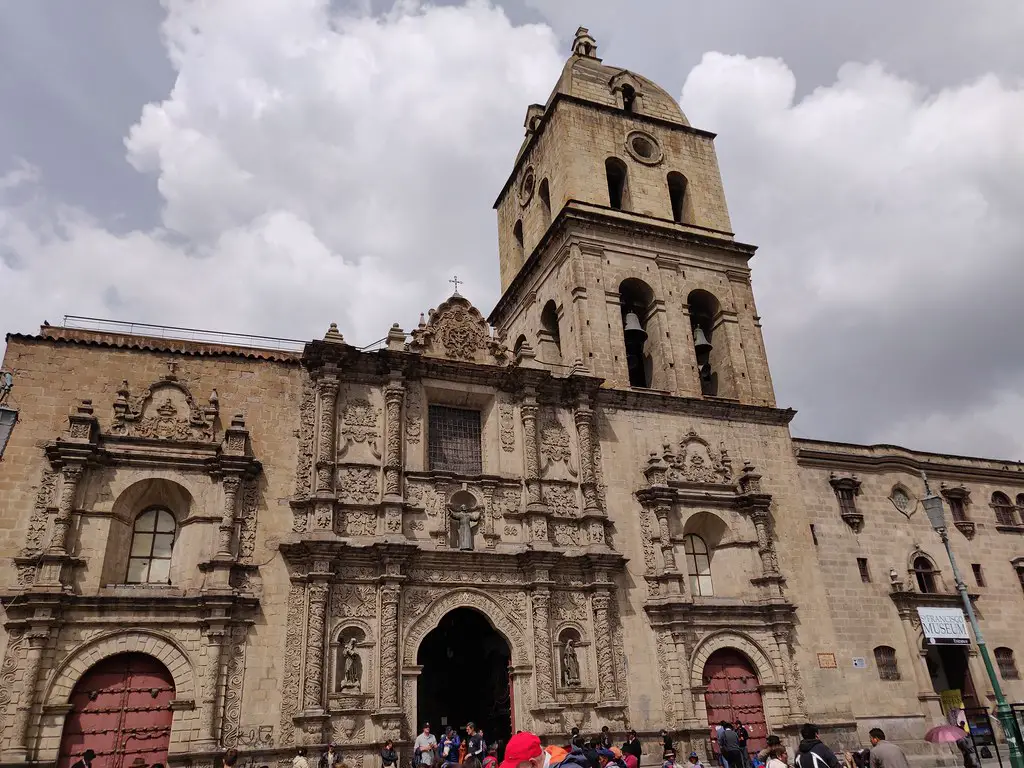
The Witches’ Market or Mercado de las Brujas is a popular tourist attraction in La Paz, Bolivia.
This unique market is filled with shops selling all kinds of traditional Bolivian items and mystical items commonly used for spiritual and religious purposes.
What to see or do: Visitors can explore the market, browse through the shops, and purchase various items such as handmade textiles, traditional remedies, amulets, and various animal fetuses that are believed to bring good luck.
Don’t miss: One of the most fascinating items at the market is the dried llama fetuses, which are believed to bring good luck in Aymara culture.
Visitors can also purchase various herbs and plants that are used in traditional Bolivian medicine.
Insider travel tips: Visitors should be cautious of pickpockets and make sure to keep their valuables safe. It is also important to respect the local culture and customs while browsing through the market.
Bargaining is common, so visitors should not hesitate to negotiate prices with the vendors.
19. Samaipata Fort and Archaeological Site

Samaipata Fort and Archaeological Site is a historical UNESCO World Heritage Site located in the eastern foothills of the Bolivian Andes.
What to see or do: Marvel at the impressive Inca stonework and architecture of the ceremonial center and the surrounding ruins, including intricate carvings and petroglyphs that depict animals, humans, and religious symbols.
You’ll learn about the history of this fascinating site and the cultural exchange between the different indigenous groups that inhabited it.
Don’t miss: The “El Fuerte” stone formation, a spectacular rock formation with a diameter of nearly 1000 feet that has been the subject of much speculation and intrigue over the years.
It’s believed that the site was a major religious center for both the Inca and the pre-Inca cultures, so be sure to take a guided tour to fully appreciate its significance.
Insider travel tips: Book your visit in advance, especially during peak tourist season, as the site limits the number of daily visitors. Wear comfortable shoes as the tour requires walking and exploring uphill.
Bring bug repellent and sunscreen, and be prepared for high altitude and weather changes. Enjoy the local cuisine and shop for handmade textiles and crafts in the nearby town of Samaipata.
20. Pico Austria
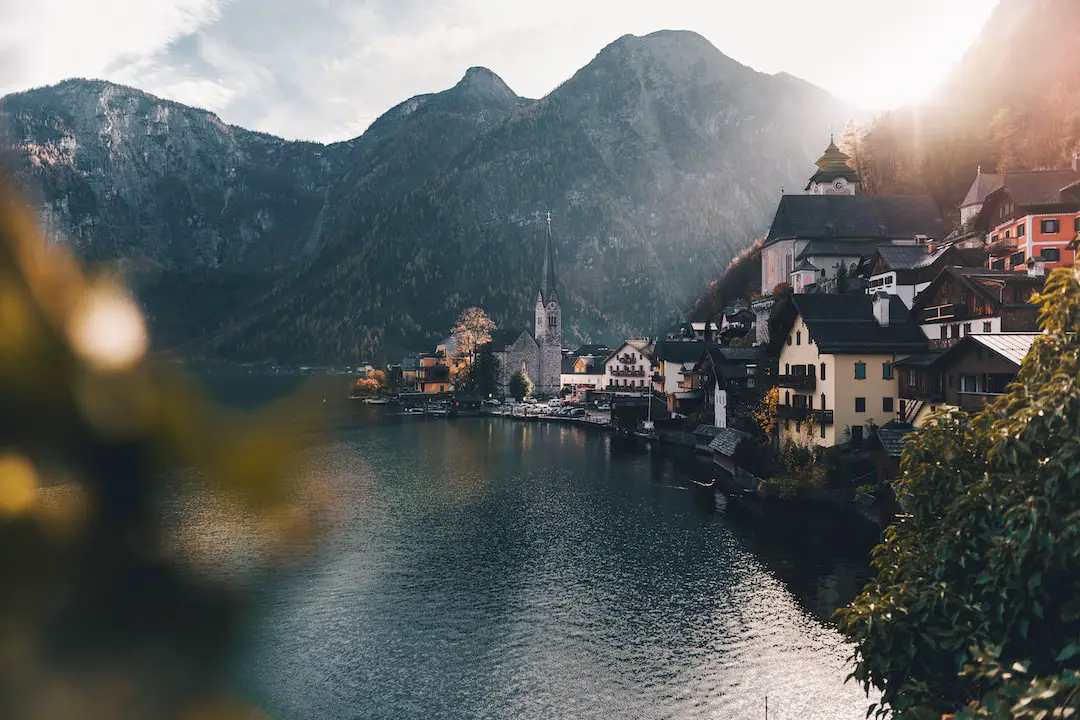
Pico Austria is a peak in the Cordillera Real mountain range of Bolivia, standing at 5,320 meters (17,454 feet) above sea level.
What to see or do: Hiking is the main activity in Pico Austria. The trail to the summit is challenging, but the views from the top are breathtaking.
Expect steep ascents, rocky terrain, and changing weather conditions. The hike usually takes between 7 to 10 hours round-trip, depending on your pace and fitness level.
Don’t miss: The panoramic views from the summit of Pico Austria are the main attraction. Bring a camera to capture the stunning landscapes of the Cordillera Real mountain range and the nearby Lake Titicaca.
Insider travel tips: The best time to hike Pico Austria is between May and September when the weather is dry and sunny.
21. Incachaca Stone Arch
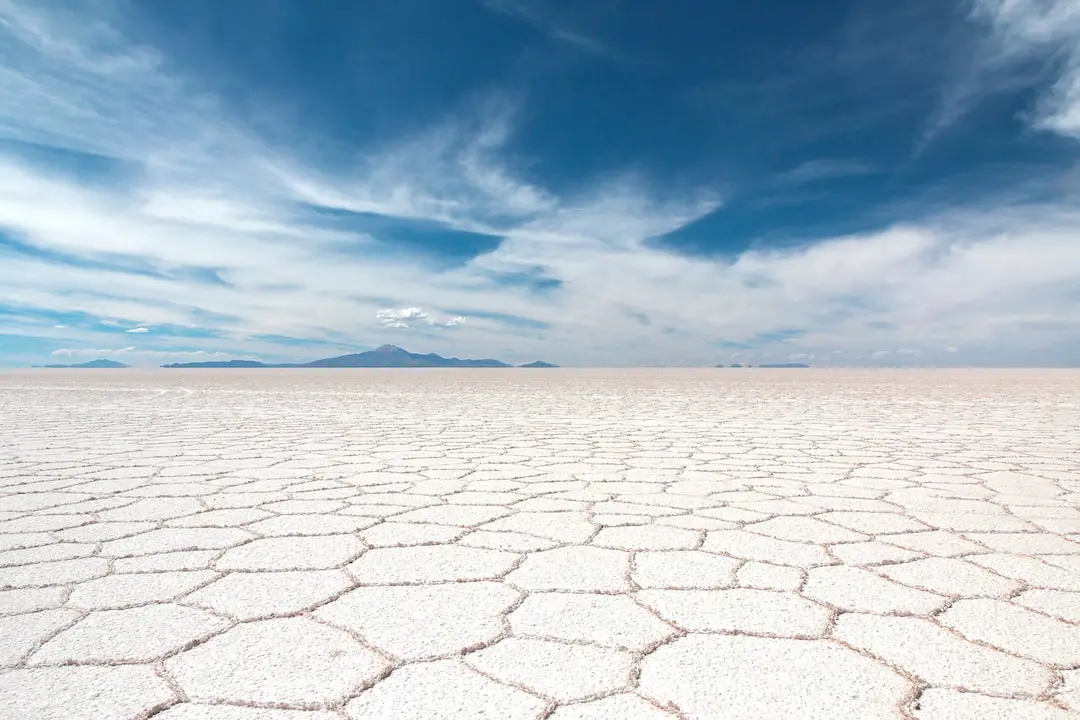
Incachaca Stone Arch is a natural formation in Bolivia that is a must-visit for any traveler exploring the Andes mountains.
What to see or do: Visitors can enjoy a scenic hike to the arch, which is located approximately 40 kilometers from Cochabamba.
Once there, they can take in the stunning views of the surrounding mountains and valley, and marvel at the impressive natural archway that seems to defy gravity.
Don’t miss: Make sure to bring your camera to capture the beauty of this natural wonder, and explore the area for hidden waterfalls and rock formations that are sure to impress.
Insider travel tips:
22. Toro Toro Canyon

Toro Toro Canyon is a natural wonder located in the Potosi Department of Bolivia, known for its impressive rock formations, deep canyons, and diverse flora and fauna.
What to see or do: Explore the canyon’s breathtaking landscapes on one of the many guided hikes, including the impressive El Vergel waterfall, the dinosaur footprints at Cal Orcko, or the Balcon del Diablo viewpoint with a stunning view of the canyon.
Don’t miss: Visiting the Umajalanta Caves, where you can observe stunning stalactites and stalagmites, and ancient rock paintings dating back to 5000 BC.
Insider travel tips: Pack comfortable shoes for the hikes and bring water and sunscreen. Consider hiring a local guide to fully appreciate the history and significance of the canyon.
Plan your visit during the dry season (May-October) for the best weather and optimal sightseeing conditions.
23. Pumapunku Archaeological Site

Pumapunku is a large archaeological site located near the city of Tiwanaku, Bolivia. It is considered to be one of the most significant and mysterious ruins in South America.
What to see or do: Visitors can explore the extensive ruins of Pumapunku, which include giant stone structures, intricate carvings and detailed stonework. The site is also home to several impressive monoliths, some of which weigh over 100 tons.
Don’t miss: One must-see feature of Pumapunku is the enormous H-shaped structure, which is estimated to have weighed over 1,000 tons.
The site is also known for its impressive stonework, which features perfectly cut and precisely fitted stones that seem to defy explanation.
Insider travel tips: It is recommended to hire a local guide to learn more about the significance and history of Pumapunku. Visitors should also bring sunscreen and plenty of water, as the site can be hot and dry.
Additionally, be sure to ask about the local legends and stories surrounding the mysterious ruins of Pumapunku.
24. Santa Cruz de la Sierra
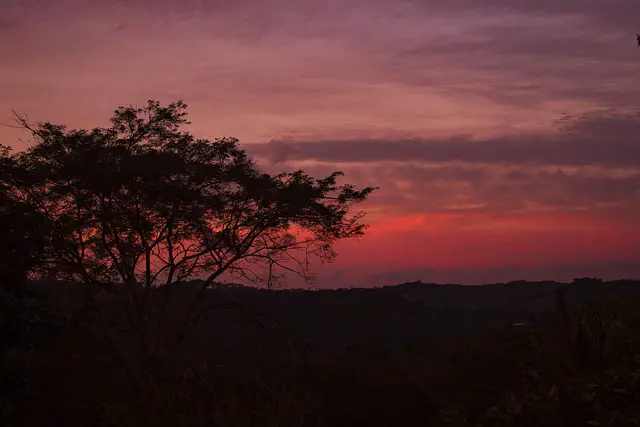
Santa Cruz de la Sierra is a sprawling metropolis in eastern Bolivia known for its warm weather, rich culture, and vibrant nightlife.
What to see or do: Visit the historic cathedral and plaza in the city center.
Don’t miss: The lively nightlife in Santa Cruz de la Sierra, where you can dance the night away to traditional Bolivian music and international beats at clubs like Kultur Berlin and La Costanera.
Insider travel tips: Be prepared for the hot and humid weather by packing lightweight clothing and drinking plenty of water.
25. Cerro Tunari

Cerro Tunari is an extinct volcano located in the Cochabamba Department of central Bolivia. At 5,023 meters (16,480 feet) above sea level, it is the highest peak in the Tunari Mountain Range.
What to see or do: Cerro Tunari is a popular destination for hikers and climbers seeking a challenging ascent with stunning panoramic views of the surrounding Andean landscape.
The climb to the summit takes approximately 6-7 hours, and there are several route options available depending on skill level and experience.
Don’t miss: The sunrise and sunset views from the summit of Cerro Tunari are breath-taking enough to be the main event. If you are lucky, you may also encounter wildlife such as Andean condors, vicuñas, or foxes along the route.
Insider travel tips: – Acclimatization before the climb is essential as altitude sickness can be a serious issue. It is recommended to spend several days in Cochabamba or other high-elevation cities nearby before the climb.
26. Apolobamba National Park
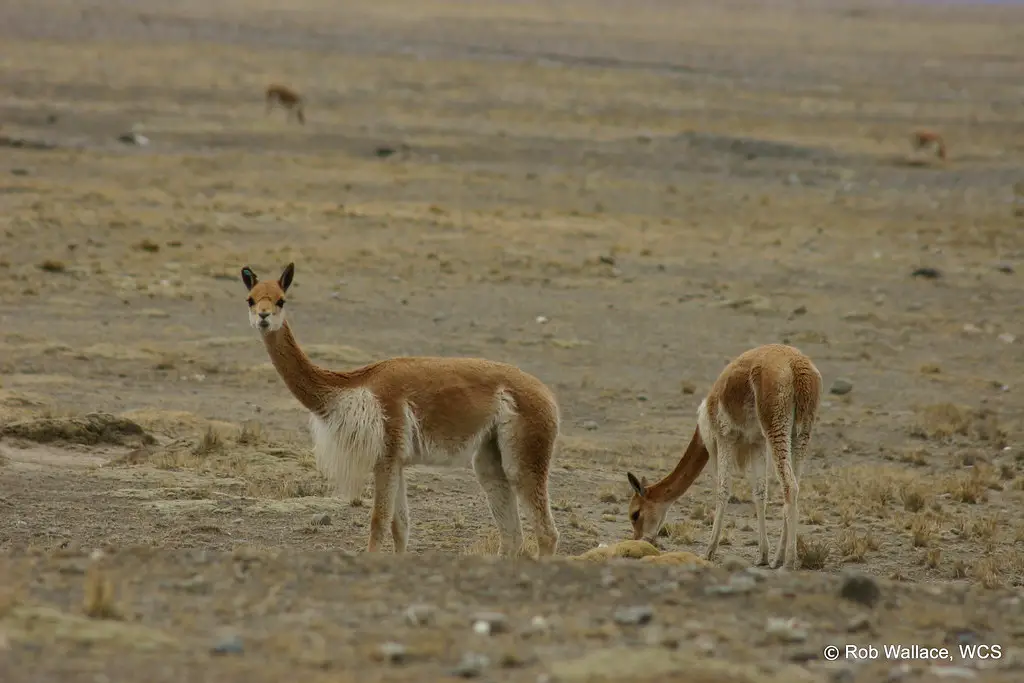
Apolobamba National Park is a protected area located in the Andes Mountains of Bolivia, near the border with Peru.
It covers an area of over 4,000 square miles and contains a diverse range of ecosystems, from high-altitude grasslands to tropical forests.
What to see or do: Visitors to Apolobamba National Park can hike to crystal-clear lakes, spot rare wildlife like the Andean cat and vicuña, and learn about the traditional customs and beliefs of indigenous communities that live in the area.
The park is also home to several hot springs, which are perfect for soaking in after a long day of trekking.
Don’t miss: The Laguna Suches and the Khoa Reef, two stunning bodies of water that are perfect for taking in views of the surrounding mountains.
Additionally, the Chachakumani Peak offers breathtaking views of the park and beyond.
Insider travel tips: Be prepared for high altitude treks and bring warm clothing as temperatures can drop considerably at night.
The park’s remote location means that visitors should plan ahead and bring all necessary supplies, including food, water, and camping equipment.
It’s also recommended to hire a local guide to get the most out of your visit and learn about the park’s history and culture.
27. Palacio Portales – Cochabamba
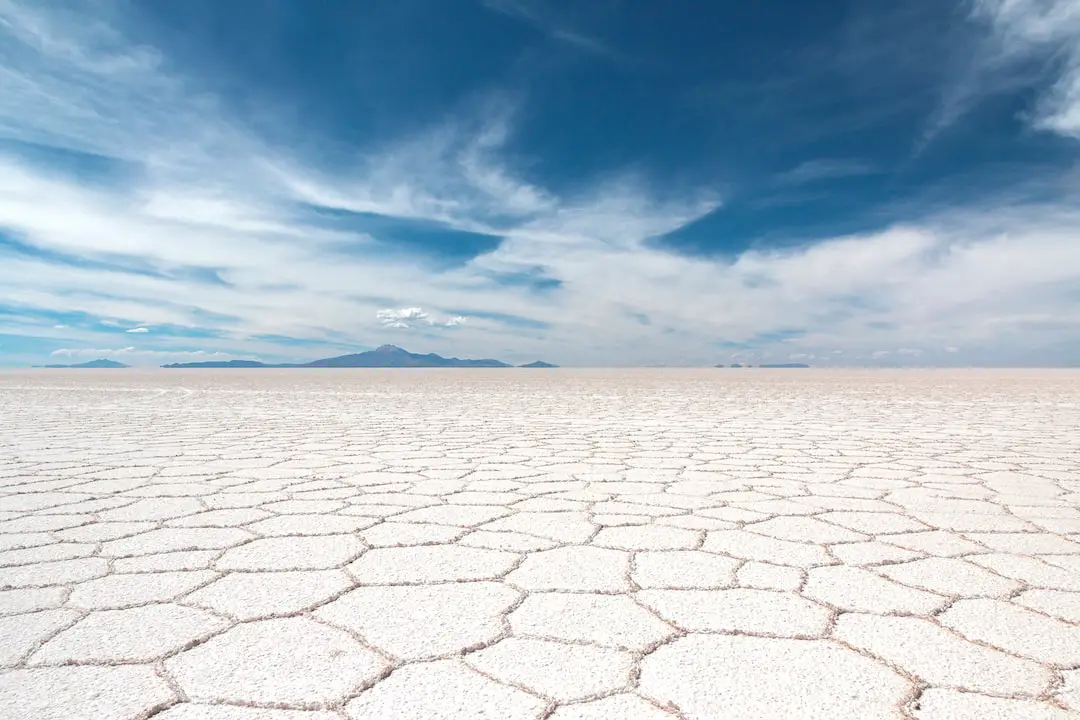
Palacio Portales is a magnificent palace built in the early 20th century in the heart of Cochabamba, Bolivia.
What to see or do: Visitors can admire the stunning architecture and interiors of the palace, featuring a mixture of European and indigenous design elements. A guided tour is recommended to fully appreciate every detail of the palace.
There is also a museum that houses a collection of art and artifacts from the Bolivian highlands and Amazon region.
Don’t miss: The beautiful gardens surrounding the palace, with fountains, statues, and exotic plants from around the world.
Insider travel tips: It’s best to visit Palacio Portales in the morning when the sunlight highlights the beautiful stained glass windows. Keep in mind that photographs are not allowed inside the palace.
Additionally, visitors may want to bring a light jacket as the palace’s interior can be chilly.
28. Che Guevara Mausoleum – Vallegrande
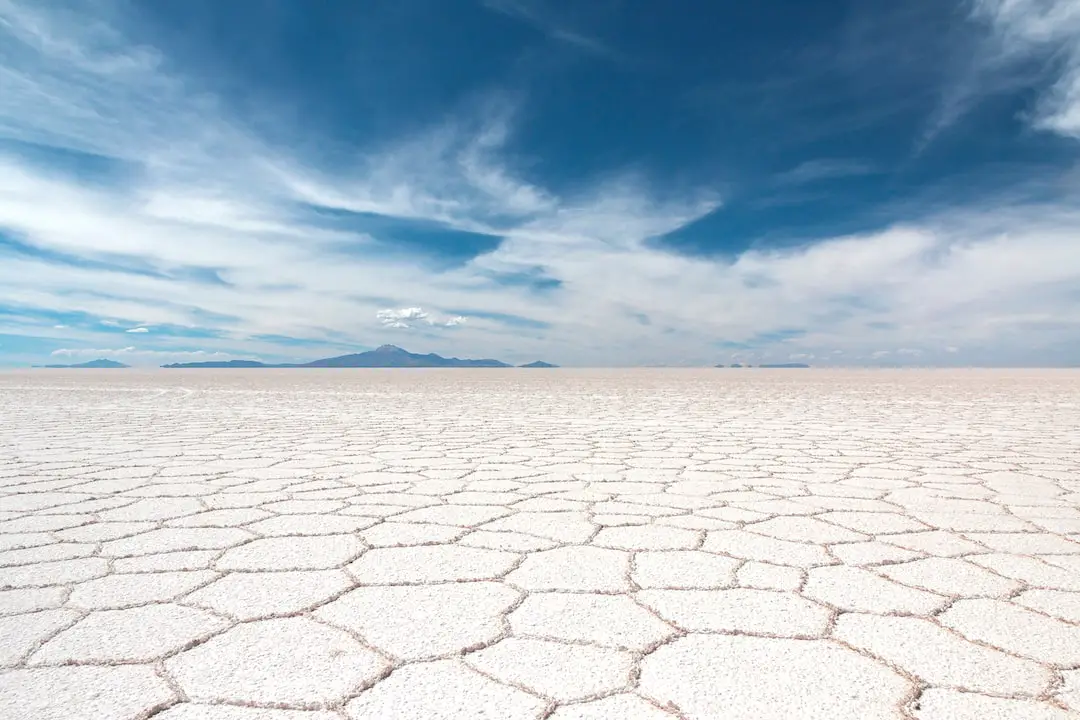
The Che Guevara Mausoleum is a pilgrimage site for the revolutionary icon’s followers. The mausoleum is located in Vallegrande, a small town in southeastern Bolivia.
What to see or do: At the mausoleum, visitors can see the final resting place of Che Guevara and his fellow guerrilla fighters who were executed in the nearby hills in 1967.
There is a museum displaying artifacts related to Che’s life and legacy, including photographs, documents, and personal belongings. The museum also features a replica of the room where Che’s body was put on display after his execution.
Don’t miss: Don’t miss the opportunity to see the hills where Che and his comrades were captured and executed. Visitors can take a tour of the area to learn about the final moments of the revolutionaries.
The town of Vallegrande also has a Che Guevara trail, which takes visitors on a walking tour of the town’s important historical sites related to Che’s life.
Insider travel tips: It is best to visit the mausoleum and surrounding areas with a guide who can provide more information about Che Guevara’s life and the events that took place in Vallegrande.
Additionally, visitors should keep in mind that the mausoleum is a solemn site and should dress appropriately and behave respectfully.
The best time of year to visit is during the Day of the Heroic Guerrilla, a festival held annually in Vallegrande in October to commemorate Che Guevara and his legacy.
29. Tarabuco Market

Tarabuco Market is a vibrant and colorful indigenous market located in the small town of Tarabuco, Bolivia. The market takes place every Sunday and has become a popular destination for tourists and locals alike.
What to see or do: The market offers a variety of handmade textiles, including traditional ponchos and woven blankets. Visitors can also find unique jewelry, pottery, and other handicrafts, as well as fresh produce and local cuisine.
Don’t miss: Make sure to catch the ceremonial dance performances, featuring dancers dressed in elaborate and colorful costumes. These performances showcase the traditional culture and customs of the indigenous peoples of Bolivia.
Insider travel tips: Arrive early to avoid the crowds and have first pick of the best items.
💪 Support independent web, support us:
